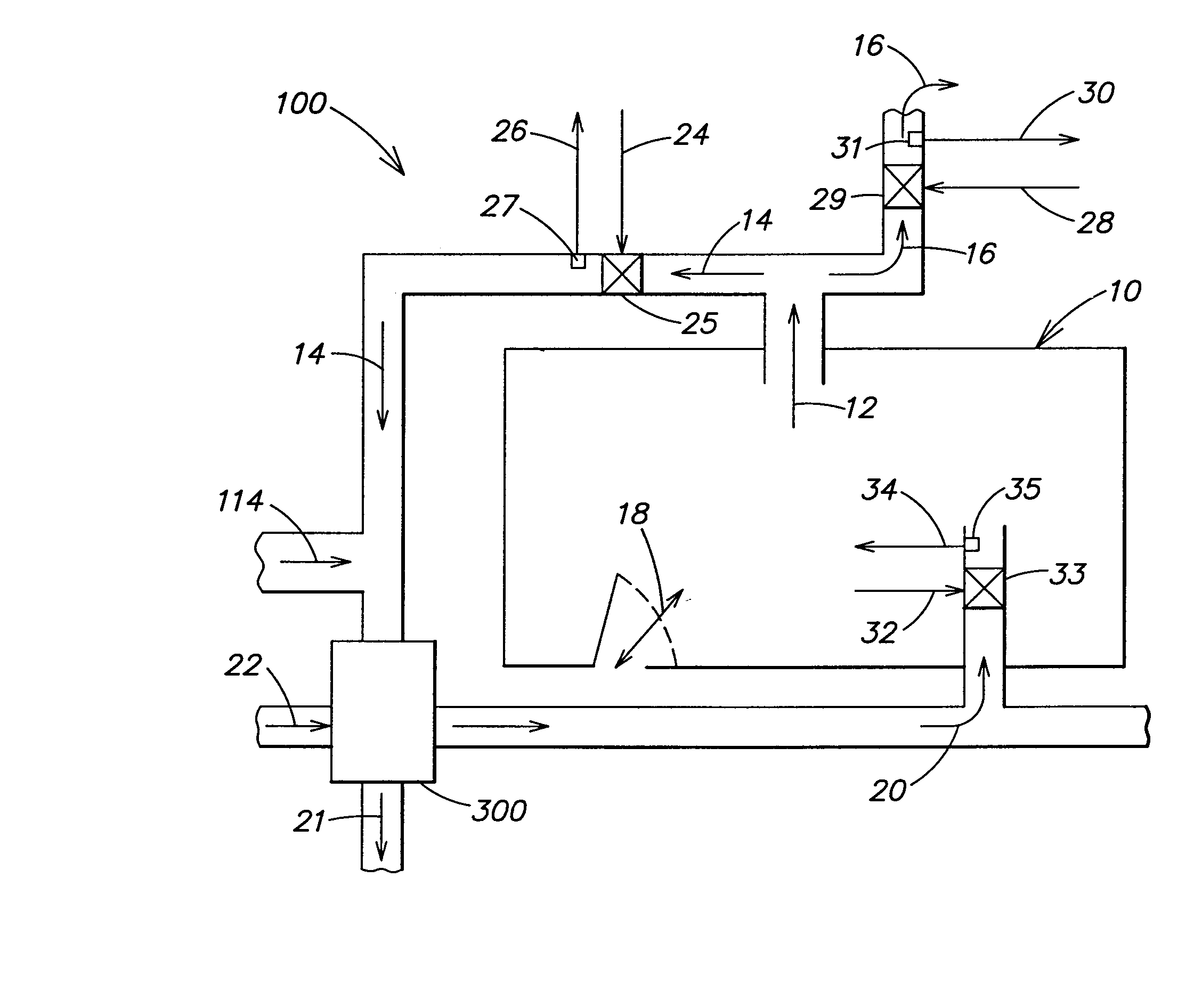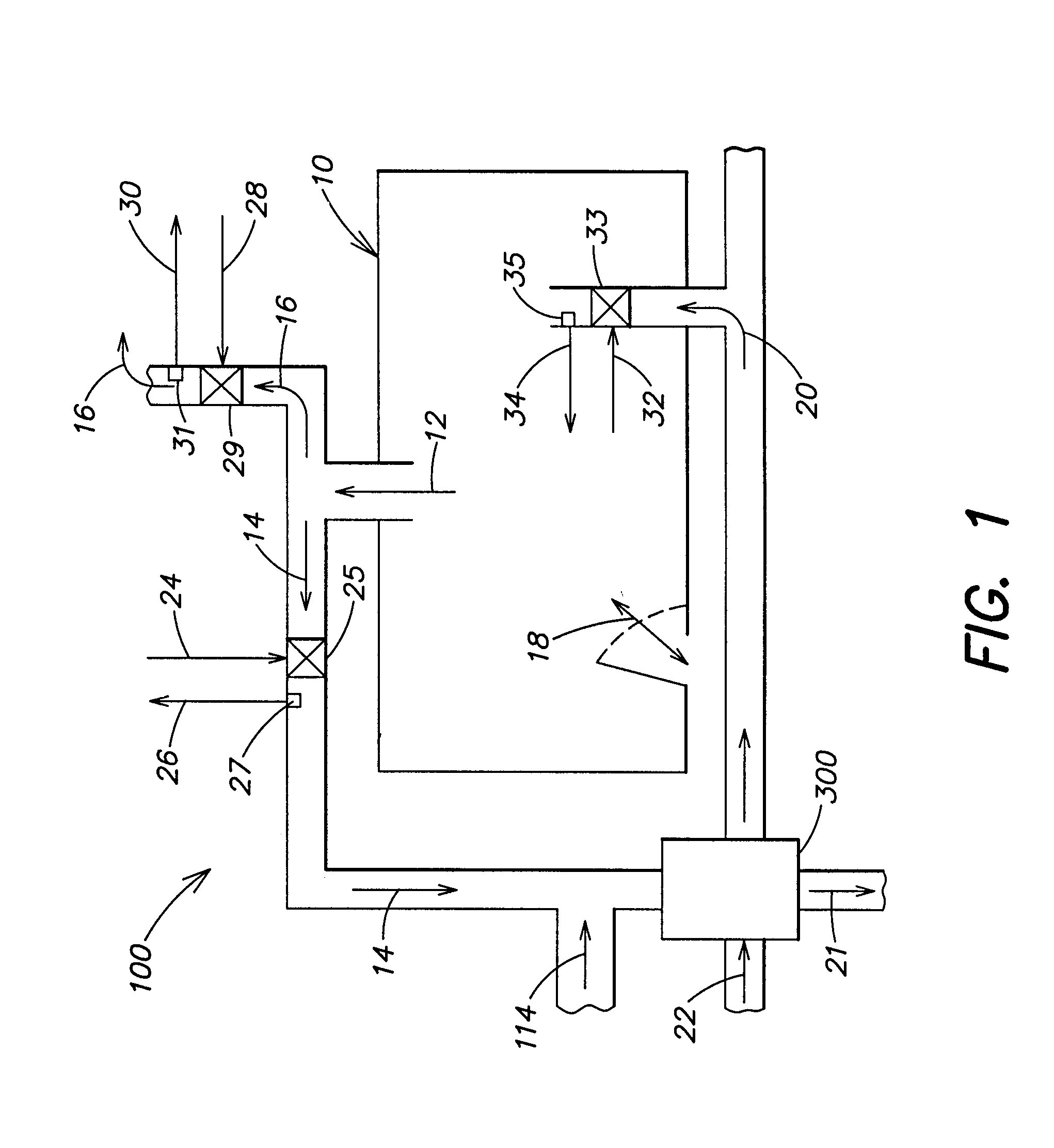Methods and apparatus for recirculating air in a controlled ventilated environment
a technology of ventilated environment and recirculating air, which is applied in the direction of ventilation systems, heating types, human health protection, etc., can solve the problems of wasting resources, affecting the desirability of recirculating air, and a large amount of potentially harmful substances in the environmen
- Summary
- Abstract
- Description
- Claims
- Application Information
AI Technical Summary
Problems solved by technology
Method used
Image
Examples
Embodiment Construction
[0045] As discussed above, conventional ventilation systems that consider both a minimum ventilation requirement and a thermal load requirement for a closed environment generally control a flow of air supplied to the environment (and a flow of air drawn from the environment) based on the greatest of the minimum ventilation requirement, the thermal load requirement, and a minimum exhaust airflow requirement for the environment (if the environment is equipped with one or more auxiliary exhaust devices). In some cases, the thermal load requirement for the environment may be appreciably greater than the other ventilation requirements, due to the presence of a significant thermal load in the environment (e.g., various heat-generating or heat-absorbing equipment).
[0046] Applicants have appreciated that, although it may be necessary to provide "fresh" (100% outside) supply air to the environment in order to satisfy minimum ventilation and / or minimum auxiliary exhaust airflow requirements, ...
PUM
 Login to View More
Login to View More Abstract
Description
Claims
Application Information
 Login to View More
Login to View More - R&D
- Intellectual Property
- Life Sciences
- Materials
- Tech Scout
- Unparalleled Data Quality
- Higher Quality Content
- 60% Fewer Hallucinations
Browse by: Latest US Patents, China's latest patents, Technical Efficacy Thesaurus, Application Domain, Technology Topic, Popular Technical Reports.
© 2025 PatSnap. All rights reserved.Legal|Privacy policy|Modern Slavery Act Transparency Statement|Sitemap|About US| Contact US: help@patsnap.com



